Tools for PFAS Site Characterization: Session II - PFAS Sources and Mapping
Sponsored by: The NIEHS Superfund Research Program (SRP)
The NIEHS Superfund Research Program (SRP) is sponsoring a Risk e-Learning webinar series, hosted by CLU-IN, focused on research efforts to develop tools for sampling, monitoring, detecting, and characterizing per- and polyfluoroalkyl substances (PFAS) contamination.
The three-part series will feature SRP-funded researchers and collaborators whose research focuses, in part, on understanding the distribution and fate of PFAS in the environment.
The second session will highlight case studies featuring SRP research to understand PFAS sources and to predict fate and transport.
To learn about and register for the other sessions in this webinar series, please see the SRP website.
Matthew Farrell is a Ph.D. candidate working in the Planchart Lab at North Carolina State University (NC State) working under Antonio Planchart, Ph.D. Matthew will present on the bioaccumulation and trophic transfer of several PFAS through aquatic food chains. He will expand on how this research was modeled through a system beginning with contaminated water and continuing with periphyton, larval mayflies, and zebrafish — tracking PFAS burdens through each step in the food chain.
Mark Brusseau, Ph.D., of the University of Arizona will discuss the conceptual and mathematical models for PFAS retention being explored in his lab. He will also describe the chemometric tools used to develop the first quantitative structure-property relationship model for predicting interfacial adsorption coefficients for PFAS. This QSPR model can be combined with our comprehensive retention model to predict the retention and migration potential of PFAS in soil and groundwater systems.
Carla Ng, PhD., of the University of Pittsburgh will provide an update on activities to reveal PFAS contamination in Southwestern Pennsylvania, an area that has received relatively little focus compared to other parts of the state. The talk will specifically address a case of accidental release in McKeesport, Pennsylvania, and efforts to understand the life cycle and contribution of legacy and ongoing industrial activity on PFAS profiles in the region.
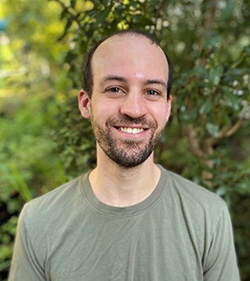 Matthew Farrell, North Carolina State University (mrfarrel@ncsu.edu)
Matthew Farrell, North Carolina State University (mrfarrel@ncsu.edu)
Matthew Farrel is a PhD candidate working in the Planchart Lab at NC State. Matthew’s research involved utillizing a zebrafish model to characterize the toxic effects of a wide range of individual PFAS and mixtures. He is also collaborating with David Buchwalter, Ph.D., and his lab to study the trophic transfer and accumulation of various PFAS chemicals. When not working in the lab he can usually be found on the couch with his fiancée and two cats.
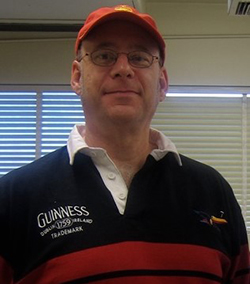 Mark Brusseau, Ph.D., University of Arizona (brusseau@arizona.edu)
Mark Brusseau, Ph.D., University of Arizona (brusseau@arizona.edu)
Mark Brusseau, Ph.D., is a professor in the School of Earth and Environmental Sciences at the University of Arizona, with joint appointments in the Soil, Water and Environmental Science Department and the Hydrology and Water Resources Department. His research specializes in the transport, characterization, and remediation of contaminants in the subsurface. He is a Fellow of the American Geophysical Union, the Geological Society of America, and the Soil Science Society of America. research is focused on developing a fundamental understanding of the factors and processes influencing the transport and fate of contaminants in the subsurface. His research integrates mechanistic, laboratory-based experimentation, site-specific field-based investigation, and the development and application of mathematical modeling.
 Carla Ng, Ph.D.,, University of Pittsburgh (carla.ng@pitt.edu)
Carla Ng, Ph.D.,, University of Pittsburgh (carla.ng@pitt.edu)
Carla A. Ng, Ph.D., is Associate Professor of Civil and Environmental Engineering at the University of Pittsburgh with secondary appointments in Environmental and Occupational Health and Chemical and Petroleum Engineering. She holds a B.S. and M.S. in Chemical Engineering from the State University of New York at Buffalo and a Ph.D. in Chemical and Biological Engineering from Northwestern University. Her research interests include toxicokinetic modeling to predict bioaccumulation and tissue distribution of per- and polyfluoroalkyl substance (PFAS); linking chemical accumulation in agricultural and aquatic ecosystems to human exposure to flame retardants, PFAS, and pesticides; and understanding and modeling the implications of chemical persistence on hazard and risk assessment, including of chemical transformation products.
Moderators:
 Mohamed Ibrahim, Ph.D., U.S. Environmental Protection Agency (ibrahim.mohamed@epa.gov)
Mohamed Ibrahim, Ph.D., U.S. Environmental Protection Agency (ibrahim.mohamed@epa.gov)
Mohamed (Moha) Ateia Ibrahim, Ph.D., is Group Leader with the United States Environmental Protection Agency (US EPA), Center for Environmental Solutions and Emergency Response (CESER). Moha combines his expertise in environmental chemistry and materials chemistry to develop and evaluate innovative water treatment technologies to remove and/or degrade emerging contaminants, such as PFAS and microplastics. In parallel, Moha has initiated and is currently leading a multi-agencies project to evaluate the environmental impacts of PFAS-replacement chemicals and formulations in firefighting foams and consumer products. He is a member of the Weapons Systems and Platforms Technical Committee of fluorine-free foams (F3) for the U.S. Department of Defense’s SERDP-ESTCP Program. Moha is also an Adj. Assistant Professor at Chemical & Biomolecular Engineering Department, Rice University. Prior to joining the US EPA, he was a Research Associate in the Department of Chemistry, Northwestern University, Postdoc at Clemson University, and Visiting Researcher at the University of Copenhagen. Moha received his B.S. degree from Alexandria University, Egypt, and his M.S. degree and Ph.D. degree from Tokyo Institute of Technology, Japan.
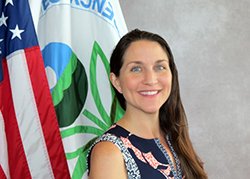 Jean Balent, U.S. EPA Technology Innovation and Field Services Division (balent.jean@epa.gov or 202-566-0832)
Jean Balent, U.S. EPA Technology Innovation and Field Services Division (balent.jean@epa.gov or 202-566-0832)
Ms Balent is on the staff of the EPA's Technology Innovation and Field Services Division where she has worked to collect and disseminate hazardous waste remediation and characterization information since 2003. Ms Balent manages the Clean Up Information Network website and actively supports online communication and collaboration resources available to EPA. She formerly worked with the US Army Corps of Engineers Environmental Engineering Division in the Buffalo District. Ms Balent was also a member of the SUNY-Buffalo Groundwater Research Group where she constructed and tested large scale models of groundwater flow. Ms Balent has also conducted research relating to the Great Lakes, environmental remediation, and brownfields re-development. She holds a Bachelor's degree in environmental engineering from SUNY-Buffalo and a Master's degree in Information Technology from AIU.
Webinar Slides and References:
-
 Slide Presentation for Mark Brusseau, University of Arizona (1.44MB/PDF)
Slide Presentation for Mark Brusseau, University of Arizona (1.44MB/PDF)
-
 Slide Presentation for Matthew Farrell, North Carolina State University (886KB/PDF)
Slide Presentation for Matthew Farrell, North Carolina State University (886KB/PDF)
-
 Slide Presentation for Carla Ng, University of Pittsburgh (10.5MB/PDF)
Slide Presentation for Carla Ng, University of Pittsburgh (10.5MB/PDF)
Additional Resources:
- Interstate Technology and Regulatory Council PFAS Reference Documents
- NIEHS PFAS Overview webpage
- SRP Public Health Impact Story: SRP Researchers Inform Health-Related Decision Making on PFAS
- SRP Science Digest: Tackling PFAS from Many Angles
Thank you for participating in our webinar. We would like to receive any feedback you might have that would make this service more valuable.
Help & FAQs
- Frequently Asked Questions
- Content Questions?
Call Mali Velasco at 919-794-4708 or mali.velascodelgado@nih.gov - Technical Problems?
Leave us a comment - Cancel Your Registration
- My Participation Records
- CEU Credits and PDHs
Zoom Resources
Before Webinar Day
This seminar will be delivered through Zoom. Participants are encouraged to update to the latest version of the Zoom application for the best experience.
If you are unable to install the Zoom application, most functions will be available if you join just using a modern web browser such as Chrome, Edge or Firefox. We strongly encourage you to run the Zoom Meeting Test prior to attending this webinar. Technical support on the day of the webinar will be very limited and subject to significant delays.
Backup Conference Call
If you cannot participate using online audio, you may join the optional call in line. After checking in for the live event using the instructions listed below, you will see several options to participate. Please click the links in option 4 to follow along by phone and obtain the call in number. If you cannot access the phone number, you may request the call in line from the event moderator in the Q&A or send an email to Jean Balent at balent.jean@epa.gov
Click on "Join Webinar" at the top of this screen, enter your exact first and last name as you registered and enter the number of people attending at your location (including yourself). You should then be taken to the Zoom meeting room. Join with Zoom Application: For those joining with the Zoom application, you may be prompted to sign with a zoom account or join as a guest without signing in.
If joining as a guest, you will be prompted to enter your name and email address. Remember your name, image, video or voice may be visible to others in the live event. When done, click "Join" When it is time for the live event to start, the meeting host will admit you to the live Zoom meeting. Join via web browser (without the Zoom Application): For those joining with a web browser, you may close any pop ups prompting you to download the Zoom app. The next window will allow you to enter your name (first name and last name) and check the box that you are not a robot. Click the blue join button. You may also be asked to provide your email address before joining the room. Remember your name, image, video or voice may be visible to others in the live event. When done, click "Join" When it is time for the live event to start, the meeting host will admit you to the live Zoom meeting. You may need to periodically refresh the browser window to confirm if the host has admitted you. The presenters will control what slide you are viewing. You may submit questions online for the instructors to answer during the webinar by typing in the "Q&A" area. It is not necessary to wait until the question and answer periods to submit questions. At the end of the webinar you will be guided to our feedback form and links to additional resources, including the complete presentation. These links will remain active after the webinar. Provided for your convenience. Importing or accepting the invitation within this iCalendar file is not required, and declining the invitation does not cancel your registration. For additional information on iCalendar, please see our
iCalendar Help It is EPA's policy to make reasonable accommodation to persons with disabilities wishing to participate in the agency's programs and activities, pursuant to the Rehabilitation Act of 1973, 29 U.S.C. 791. Any request for accommodation should be made to at or , preferably one week or more in advance of the webinar, so that EPA will have sufficient time to process the request. EPA would welcome specific recommendations from requestors specifying the nature or type of accommodation needed. EPA welcomes specific recommendations from requestors specifying the nature or type of accommodation needed. Please note that CLU-IN provides both alternate phone call-in options and closed captioning for all webinars, and requests for these specific accommodations are not necessary.
Webinar Day, Checking In
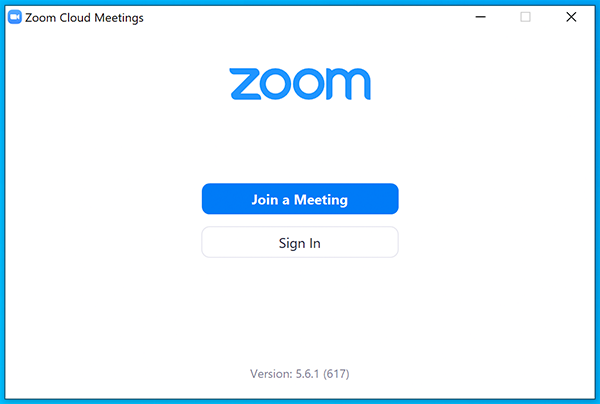
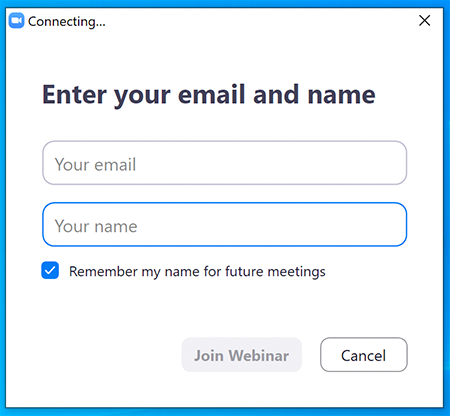
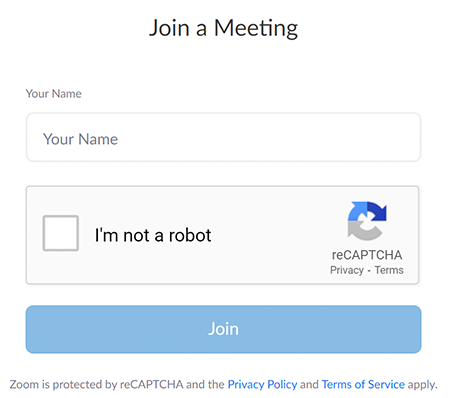
Moving Through Slides
Feedback & Links to Additional Resources
iCalendar File
Rehabilitation Act Notice for Reasonable Accommodation
Rehabilitation Act Notice for Reasonable Accommodation
It is EPA's policy to make reasonable accommodation to persons with disabilities wishing to participate in the agency's programs and activities, pursuant to the Rehabilitation Act of 1973, 29 U.S.C. 791. Any request for accommodation should be made to at or , preferably one week or more in advance of the webinar, so that EPA will have sufficient time to process the request. EPA would welcome specific recommendations from requestors specifying the nature or type of accommodation needed. EPA welcomes specific recommendations from requestors specifying the nature or type of accommodation needed. Please note that CLU-IN provides both alternate phone call-in options and closed captioning for all webinars, and requests for these specific accommodations are not necessary.
Webinar Recording
By participating in this CLU-IN webinar, you automatically agree to authorize recording of audio and visual content presented during this live event and consent to subsequent use of this recording in the public domain by the U.S. Environmental Protection Agency. This recording may include questions, comments and poll responses provided by you during the live event in addition to your name, voice, image or likeness. This recording will be made available after the conclusion of the live event as part of the CLU-IN webinar archives, and will remain available indefinitely. If you do not wish to consent to the recording, please do not join the live event, and contact Jean Balent at 202-566-0832 or balent.jean@epa.gov to discuss your concerns.
Content Disclaimer
This webinar is intended solely to provide information to the public. The views and opinions expressed as part of this webinar do not necessarily state or reflect those of the U.S. Environmental Protection Agency. It is not intended, nor can it be relied upon, to create any rights enforceable by any party in litigation with the United States, or to endorse the use of products or services provided by specific vendors. With respect to this webinar, neither the United States Government nor any of their employees, makes any warranty, express or implied, including the warranties of merchantability and fitness for a particular purpose, or assumes any legal liability or responsibility for the accuracy, completeness, or usefulness of any information, apparatus, product, or process disclosed, or represents that its use would not infringe privately owned rights.

